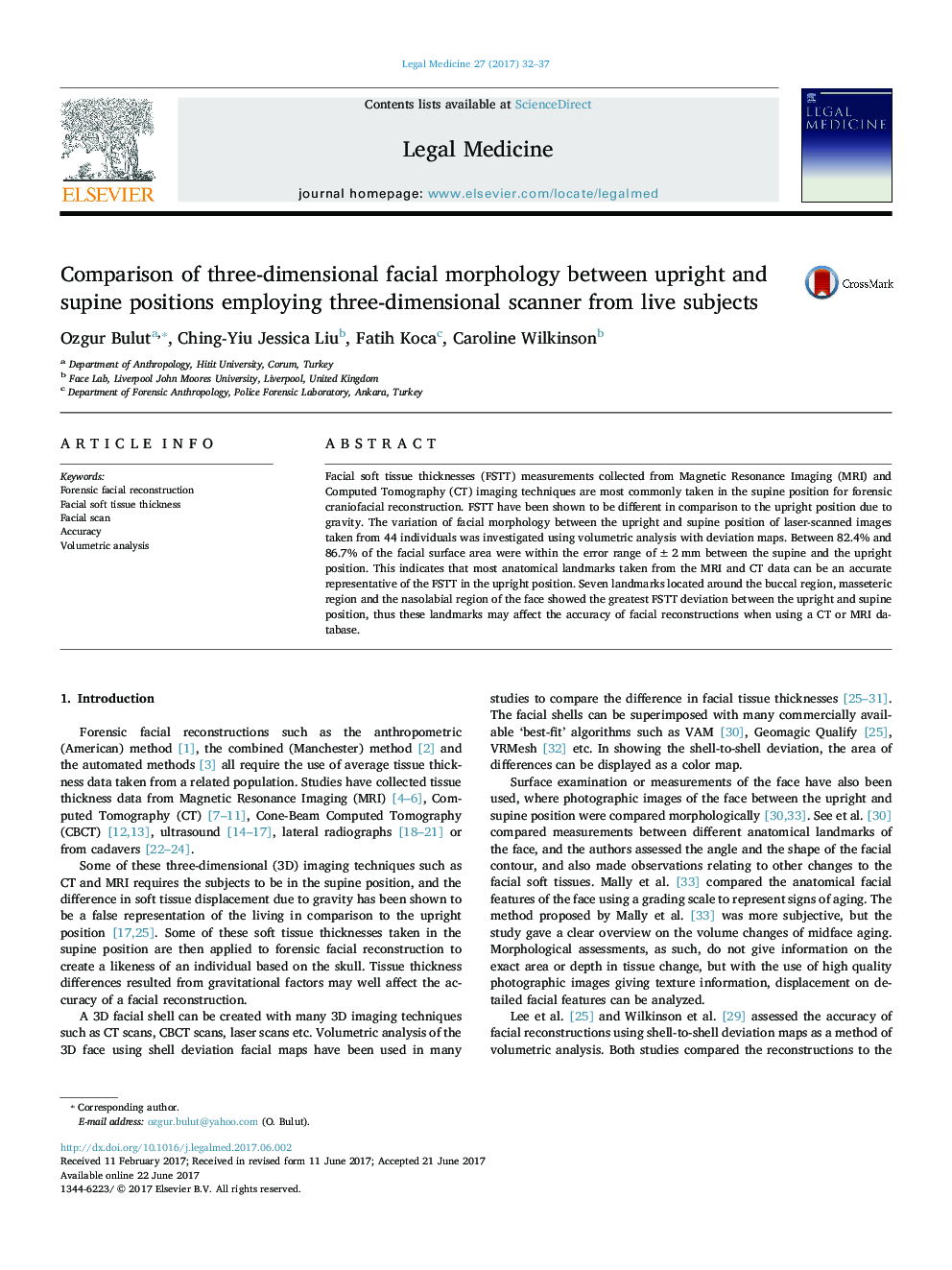| Article ID | Journal | Published Year | Pages | File Type |
|---|---|---|---|---|
| 4760864 | Legal Medicine | 2017 | 6 Pages |
Abstract
Facial soft tissue thicknesses (FSTT) measurements collected from Magnetic Resonance Imaging (MRI) and Computed Tomography (CT) imaging techniques are most commonly taken in the supine position for forensic craniofacial reconstruction. FSTT have been shown to be different in comparison to the upright position due to gravity. The variation of facial morphology between the upright and supine position of laser-scanned images taken from 44 individuals was investigated using volumetric analysis with deviation maps. Between 82.4% and 86.7% of the facial surface area were within the error range of ±2 mm between the supine and the upright position. This indicates that most anatomical landmarks taken from the MRI and CT data can be an accurate representative of the FSTT in the upright position. Seven landmarks located around the buccal region, masseteric region and the nasolabial region of the face showed the greatest FSTT deviation between the upright and supine position, thus these landmarks may affect the accuracy of facial reconstructions when using a CT or MRI database.
Related Topics
Physical Sciences and Engineering
Chemistry
Analytical Chemistry
Authors
Ozgur Bulut, Ching-Yiu Jessica Liu, Fatih Koca, Caroline Wilkinson,
